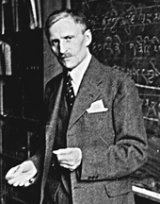Name Jacques Bacot | Died 1965 | |
 | ||
Jacques Bacot (4 July 1877 – 25 June 1965) was an explorer and pioneering French Tibetologist. He travelled extensively in India, western China, and the Tibetan border regions. He worked at the École pratique des hautes études. Bacot was the first western scholar to study the Tibetan grammatical tradition, and along with F. W. Thomas (1867–1956) belonged to the first generation of scholars to study the Old Tibetan Dunhuang manuscripts. Bacot made frequent use of Tibetan informants. He acquired aid from Gendün Chöphel in studying Dunhuang manuscripts.
Contents
Biography
The Tibetological career of Jacques Bacot began from a round the world trip which he made in 1904 and from an expedition to Tibet in 1906, starting from Tonkin, in the course of which he followed a pilgrimage route which must have put him in intimate contact with the religious life of Tibet. After his return to France in 1908, he devouted himself to the study of Tibetan with Sylvain Lévi.
Jacques Bacot explored various Asian countries:
and travelled extensively in India, in the east of China, and the border regions of Tibet.
Jacques Bacot was named director of studies (directeur d'études) of Tibetan at l'École pratique des hautes études in 1936. He became a member of l'Académie des inscriptions et belles-lettres in 1947, and entered the Société Asiatique in 1908. He became president after the death of Paul Pelliot, in 1945, and remained so until 1954.
The paintings and bronzes which he acquired in his various expeditions are now held at the Guimet Museum in Paris, which he donated to in 1912. His library and papers were also donated to the museum after his death.
